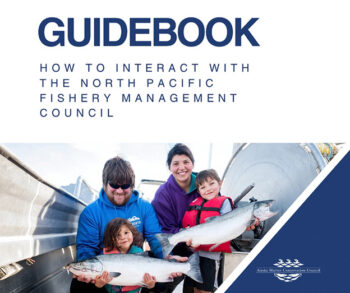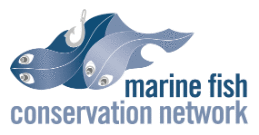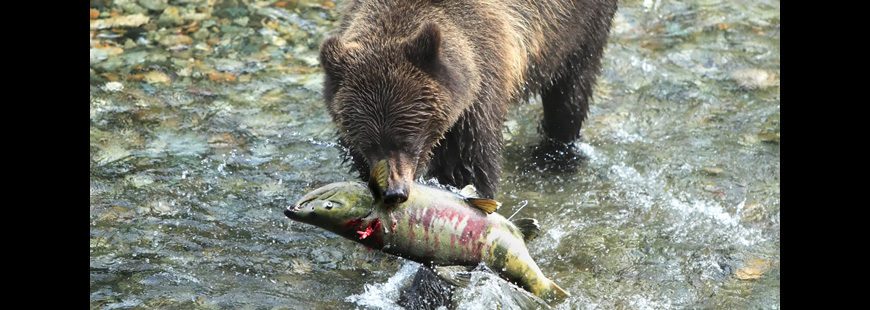This article was adapted from the Alaska Marine Conservation Council’s blog and reposted with permission. Top photo: Alaskabrown bear with chum salmon, by Alan Vernon via Wikipedia
At the recent North Pacific Fishery Management Council (NPFMC) meeting in February, the Alaska Marine Conservation Council (AMCC) testified, urging decisive action to address chum salmon bycatch in the Bering Sea pollock fishery. As Western Alaska chum salmon abundance remains critically low, our team called for a management framework that prioritizes transparency, enforces a hard cap on bycatch and establishes science-driven migration corridors.
Western Alaska groups rallied an enormous effort to be heard at this meeting, with 186 people signed up to testify to the importance of this issue. Chum salmon are vital—not only for commercial and subsistence fisheries but as a cornerstone of Alaska Native cultural traditions. Current bycatch management frameworks do not adequately protect economic stability and the health of the broader marine ecosystem. AMCC’s testimony emphasized three critical actions the Council must take:
- Transparency & Accountability – Public reporting and strengthened Incentive Plan Agreements (IPAs) to ensure real-time responsiveness to bycatch data.
- Data-Driven Migration Corridors – Adaptive closures and seasonal adjustments based on historical and real-time salmon distribution patterns.
- Hard Bycatch Cap – A fixed, science-based limit that protects chum salmon regardless of pollock harvest levels.

Read AMCC’s Guidebook for tips on engaging with the NPFMC
Listen to the AMCC Testimony by Jamie O’Connor and Michelle Stratton.
Read the AMCC Written Comments.
While the Council deliberates the next steps, your voice matters. AMCC will continue to push for stronger bycatch protections—but they are looking for your support to keep the pressure on.
If you would like to support this effort, sign up for the NPFMC newsletter to stay updated on recent and upcoming actions. You can also sign up for AMCC’s newsletter to stay informed. This issue is expected to come back before the Council in October or December 2025—please watch for reminders from the NPFMC and AMCC about opportunities to submit public comments.
Looking for guidance? Check out AMCC’s Guidebook for tips on engaging with the NPFMC, including how to prepare written comments and public testimony. This guide can help engage fishery management councils in other regions, too!
About the Authors
Jamie O’Connor is the principal contractor with Intertidal Consulting, and works with the Alaska Marine Conservation Council (AMCC). Michelle Stratton is the executive director & scientific officer for the AMCC.


